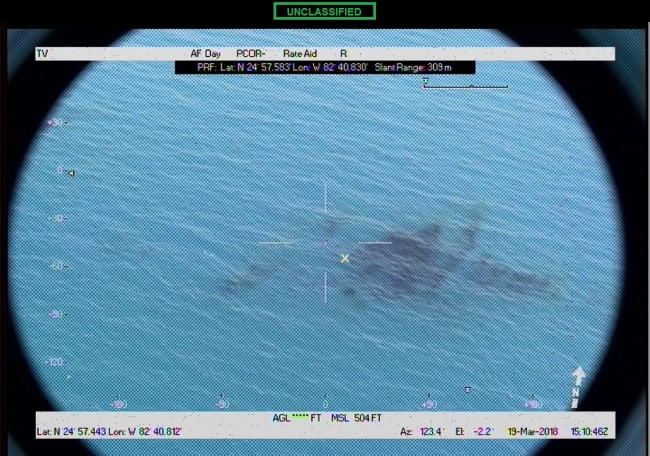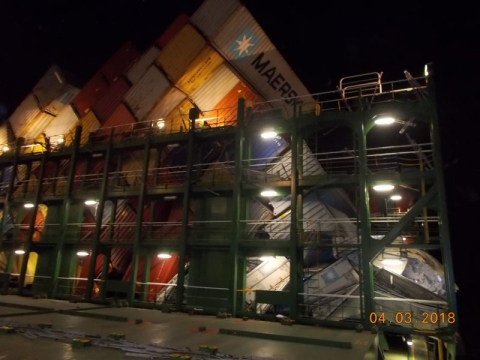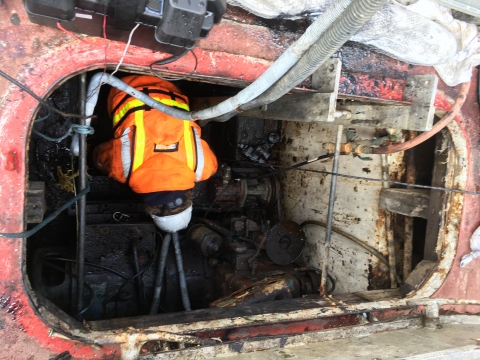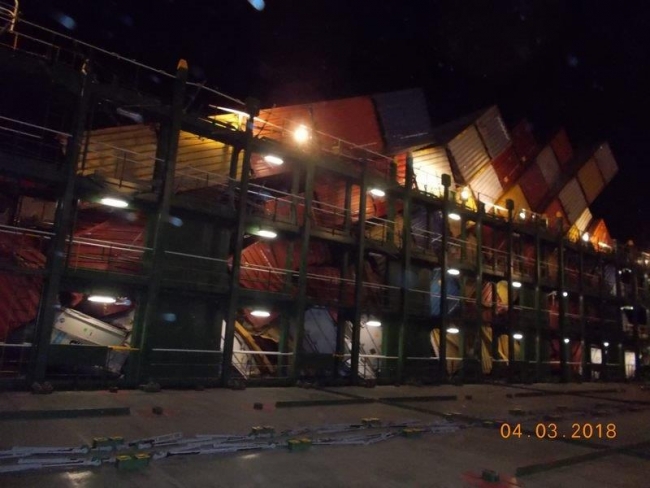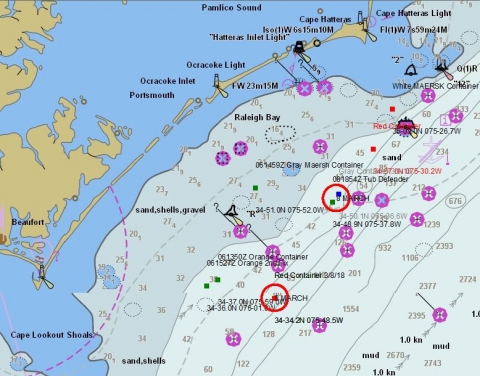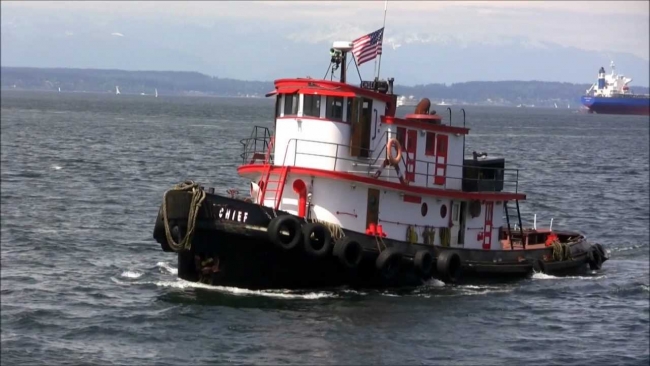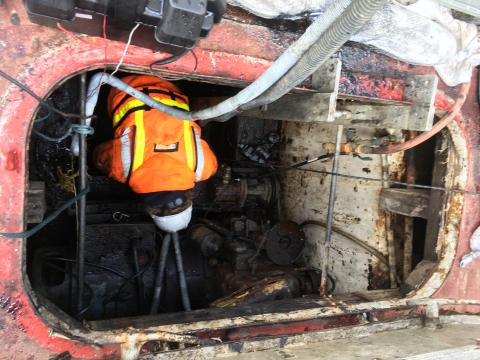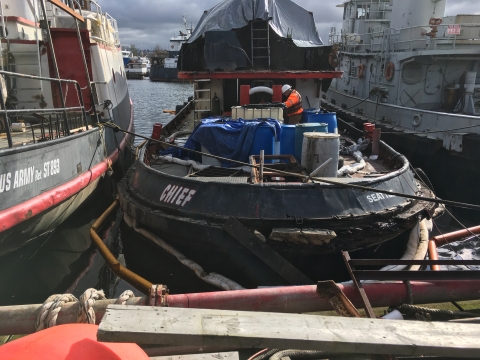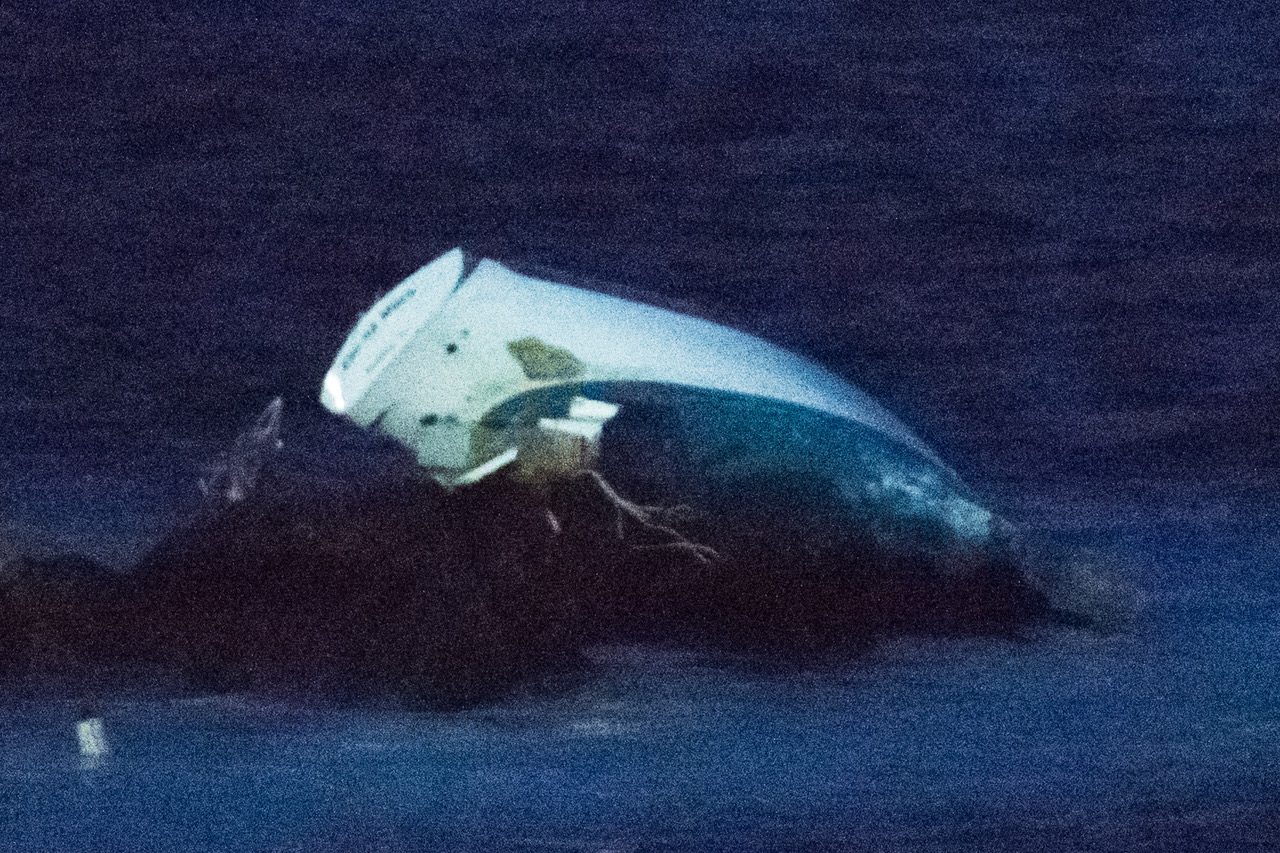Every month our Emergency Response Division provides scientific expertise and services to the U.S. Coast Guard on everything from running oil spill trajectories to model where the spill may spread, to possible effects on wildlife and fisheries, and estimates on how long the oil may stay in the environment.
Here are some of March’s notable incidents:
Containers Lost off North Carolina Coast
On March 3, the cargo ship Maersk Shanghai reportedly lost 76 shipping containers about 17 miles off the coast of Oregon Inlet, North Carolina. The U.S. Coast Guard notified OR&R of the incident and requested information on potential hazardous materials contained in the lost containers.
One of the containers that went overboard was carrying approximately 5,900 pounds of sulfuric acid. This container has yet to surface. There is limited concern for environmental impact, as the sulfuric acid would be diluted further by the strong bottom currents in the event of a release.
While several containers have been located and recovered, some are still unaccounted for. The Coast Guard is continuing to monitor for the lost containers.
For more information, view the Coast Guard press release.
Derailed Train Cars in Susquehanna River, Delaware
The U.S. Coast Guard notified OR&R that four empty rail cars were blown off the Susquehanna River Bridge and into the river adjacent to Havre de Grace, Maryland, on March 2. The empty cars, which belonged to CSX Transportation, were marked for removal and all four cars were recovered. The case was closed on March 15.
Read the OR&R article for more information.
Salvage Operation in Salmon Bay, Washington
On March 8, OR&R was contacted by the U.S. Coast Guard Sector Puget Sound to report on the resources at risk for a potential salvage operation in Salmon Bay, Washington. The tug Chief sank in November 2017 near the Ballard Locks in the Lake Washington Ship Canal. It was re-floated and remains in a slip at the Stabbert Shipyard in Ballard. The wooden vessel is saturated with oily residue despite intense cleaning. It is currently taking on about 40 gallons of water a day. The water is becoming very oily as it comes in contact with the contaminated surfaces in the below-deck spaces. The oily water is being pumped into barrels and removed from the vessel. The proposed plan is to tow the vessel to a yet-to-be-determined location/date for restoration or destruction.

Vessel Caught Fire near Dry Tortugas, Florida
On March 18, the U.S. Coast Guard Sector Key West reported that a fishing vessel was on fire 22 miles northeast of Dry Tortugas, Florida. F/V OLE BETTS SEA was carrying 7,000 gallons of diesel onboard in 100 feet of water. The Coast Guard suspects the vessel will continue to burn and sink in its current location.
OR&R is providing a trajectory analysis and fate and effects report. Some oil release was observed during an overflight. OR&R is providing trajectory analysis and fate and effects reports. The U.S. Coast Guard continues to monitor the situation.
Vessel Debris in Pacific Grove, California
Monterey Bay National Marine Sanctuary staff contacted OR&R to request a drift estimate of submerged vessel debris from a grounded, 35-foot sailing vessel (S/V EAN NA MARA) that broke apart near Pacific Grove, California on Jan. 12, 2018. The vessel broke apart around 6 p.m. and disappeared from sight; however, subsequent dive and side scan sonar surveys have been unable to locate keel and engine. The sanctuary requested any information that might assist in future subsurface surveys for the vessel debris.
Here is the complete list of last month’s incidents, click on the links to find out more:
- M/V Tropic Caribe
- MAERSK Shanghai Lost Containers
- Derailed Train Cars; Susquehanna River, DE
- Tug Chief (Salvage Operation)
- Helicopter Crash in the East River; Five Dead
- M/V Diamond Express
- F/V OLE BETTS SEA
- Chesapeake Bay Bridge Tunnel Chemical Release
- Marathon Petroleum Co, Mississippi River MM140
- M/V Rio Barrow
- Bio-Diesel Discharge; Kirby Inland Marine
- Vessel Debris
- Diesel Discharge, Rollover Bay, TX
- Oil & Produced Water,Dead End Well Canal, LA

